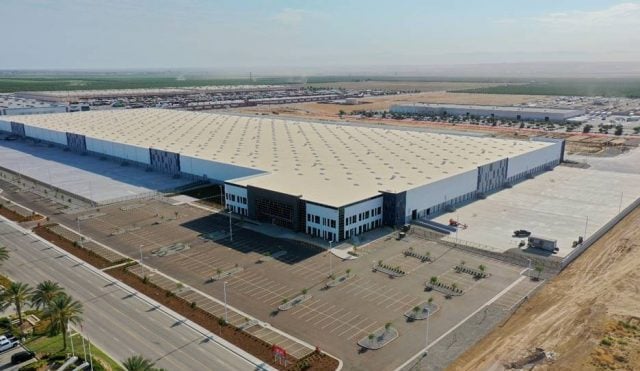COSTA MESA, CA—The standard method for presenting a property to market is undergoing a drastic makeover, industry experts tell GlobeSt.com. Following the retail trend of offering entertainment value for customers and the office and multifamily trends of providing engaging common amenities for employees and tenants, the real estate industry is doing more to engage potential buyers and users through its building-marketing programs.
Case in point: the Michelson building in Irvine, CA. As part of a marketing campaign that highlighted the building as an iconic landmark, locally based marketing firm Idea Hall brought in local luxury publication Coast Magazine to do a fashion photo shoot at the building. The theme was also present in branding, logos and a website for the property.
In other cases, as GlobeSt.com has reported, using billboards as a means to advertise commercial properties for rent—pointing out the lifestyle amenities of the property—are coming into play, and high-tech methods such as real-time videos and interactive websites are popping up. It's a whole new ball game for marketing commercial real estate.
“We are all pretty savvy customers today,” Rebecca Hall, president and CEO of Idea Hall, tells GlobeSt.com. “There is a certain experience you have when you go to the Apple store or Nordstrom or whatever the retailer of choice is. The same is true in the hospitality industry. Our personal tastes become consumerized. You have a certain experience buying a new Lexus or going to the Ritz Carlton. These are very defined experiences that feel good, and they all start to change our expectations of what that experience should be.”
Hall says businesses want to attract top talent, which began the creative-space trend. “That's where it's coming from—taking our consumer expectations and turning them into better, more thoughtful ways to help businesses make spaces work harder for them, new ways to approach design and new ways to communicate about what those designs are.”
Hall explains that her firm is tapped as the marketing/communications team to create brands that convey all of the above. “We expect it in consumer brands, so why not business brands? We are all consumers at the end of the day. We have to include both the logic and emotion in anything persuasive.”
Typical tasks include creating naming of properties, developing an engaging logo, building out a website and telling a story to the brokerage audience—and potentially the end user—via videos, 3D renderings and animation to help people visualize what the experience of occupying that building could be. “We do more real-life renderings than ever before, with an emphasis on photography,” says Hall. “We get the messages out via PR and advertising, email campaigns and events. Each assignment has its own uniqueness or stage of readiness in the market. We take a vision in somebody's head and start to bring it to life. It speeds up the leasing process in a lot of cases when people can visualize how they and their team members can work in a space.”
Developers tell GlobeSt.com they are beginning to use these creative marketing programs to both introduce and reinforce the branding of a particular property. “Our 'Bridge the Gap' campaign for Goodman Logistics Center Oakland was a fun way to introduce our global story to the Bay Area industrial brokerage community,” says Brandy Birtcher, CEO at Goodman Birtcher North America. “The creative approach to the campaign that included advertising, emails, media relations and the broker ground-breaking event worked together to create significant buzz about our new company and the 375,000-square-foot Oakland development.”
Michael Navarro, regional VP at Legacy Partners, adds, “Helping potential tenants visualize the finished space is an important marketing tool, particularly when a project is under construction. We had Idea Hall develop a website for 150 Orange Grove in Pasadena that includes a 3D visualization video to illustrate the dramatic redesign of the building. The video gives brokers and tenants an engaging medium to experience the project.”
Hall explains that customization and personalization are becoming increasingly more important in commercial real estate in order to meet tenants' expectations, and marketing programs are beginning to reflect that. “Office was the first to jump on this trend, and I think that's going to continue as the sector strengthens. We've been doing branding of buildings for as long as I've been in this business, but it's gone to a whole new level because of consumer expectations and the decision-makers as well.”
Technology is also making this type of marketing more accessible, she adds. “The benefit of technology is it's allowing us to do things that are more affordable today. Office tends to put more into this, but Roll Real Estate also did this specifically for the Paramount Logistics Park. They knew their customer was not local. You really have to stand out and what we call internally 'take the project to the brokers.' How do you do that? Via a compelling website that not only shares the logic and statistics, but also the emotion—it featured a time-lapse video so people can see it's really under construction. This addresses the vision of what's being developed and shores up potential objections like, 'Will it be ready in time for my client?' ”
© Touchpoint Markets, All Rights Reserved. Request academic re-use from www.copyright.com. All other uses, submit a request to [email protected]. For more inforrmation visit Asset & Logo Licensing.






